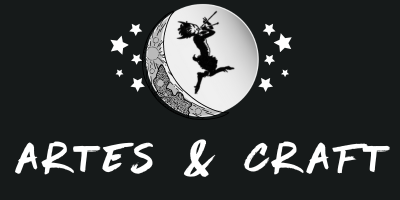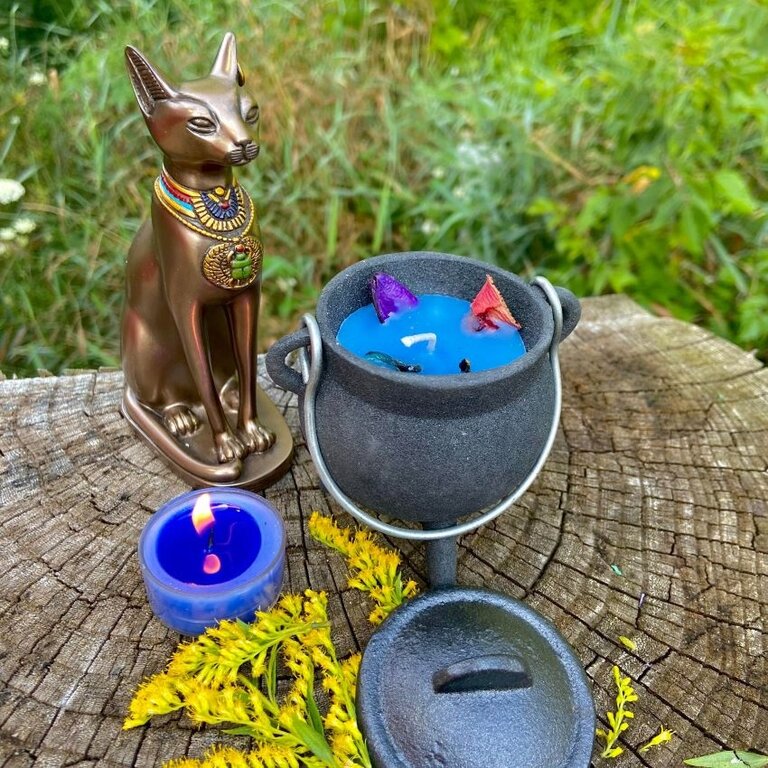


Login
Log in if you have an account
Register
Having an account with us will allow you to check out faster in the future, store multiple addresses, view and track your orders in your account, and more.
Create an accountCast Iron Cauldron 4inch with Smudge Candle White Sage
The cauldron has long been associated with pagans, witches, and witchcraft!
These wonderful little 4 inch cauldrons are cast iron and filled with a smudge candle for banishing and creating sacred space! Once the candle has burned away you are left with a gorgeous little cast iron witch cauldron for your altar and spell craft!
For the Celts, cauldrons had many everyday uses. As well as cooking, boiling, cleaning, bathing, carrying water and other domestic tasks they also had a special place in their religious rites and mythology. As a cauldron was a container for water, the ocean – and possibly some lakes – were thought of as great cauldrons. Sometimes cauldrons were left as votive offerings to the gods in bogs, rivers, and pools.
When a cauldron of water was placed over a fire and filled with water and boiled, its magic could be seen in bubbling action. Whatever was placed into it came out changed. In the Celtic Otherworld, the amount of poetic and artistic inspiration a person received was governed by how they had lived their life. How the water in the cauldron bubbled determined the measure they received. Welsh legend also tells of cauldrons that were useful to warring armies. In the second branch of the Mabinogi in the tale of Branwen, Daughter of Llŷr, the Pair Dadeni (Cauldron of Rebirth) is a magical cauldron in which dead warriors could be placed and then be returned to life, save that they lacked the power of speech. It was suspected that they lacked souls. These warriors could go back into battle until they were killed again. In Wicca and some other forms of neopagan or pagan belief systems, the cauldron is still used in magical practices. Most often a cauldron is made of cast iron and is used to burn loose incense on a charcoal disc, to make black salt (used in banishing rituals), for mixing herbs, or to burn petitions (paper with words of power or wishes written on them). Cauldrons symbolize not only the Goddess but also represent the womb (because it holds something) and on an altar, it represents earth because it is a working tool.
The Cauldron of Ceridwen
One of their most famous cauldrons was the cauldron of knowledge, inspiration, and rebirt. It belonged to a sorceress named Ceridwen. She used her cauldron to brew a potion that would imbue knowledge and wisdom to whoever drank of it, yet she intended it solely for her son. The concoction had to be boiled and stirred for a year and a day. She tasked a blind man named Morda with the job of feeding the fire, and a boy named Gwion Bach with stirring the brew. Many people see the continuous stirring of the cauldron as blending the attributes of divine wisdom and inspiration with the eternal cycle of life, death, and rebirth to create the perfect brew of existence.By accident, Gwion imbibed three drops of the brew when they splashed on his hand. Putting his hand to his mouth to ease the pain, he was instantly imbued with wisdom. Knowing Ceridwen would be angry he fled. She chased him, and the two underwent a series of shapeshifting transformations into different animals and birds eventually resulting in him being reborn as Taliesin.
The Dagda’s Cauldron of Plenty
Another famous cauldron was owned by the Irish deity known as the Dagda who was often portrayed as a giant with a long black beard. This was called the Cauldron of Plenty, and was one of the Four Treasures of the Tuatha Dé Danann. The Dagda was an important god of gigantic stature associated with fertility, agriculture, strength, and manliness. He was often portrayed humorously and was believed to control the weather, crops, time, seasons and life and death. Everyone of good character could eat their fill from this cauldron which never ran out. The ladle was said to be so large two men could easily fit into it.







